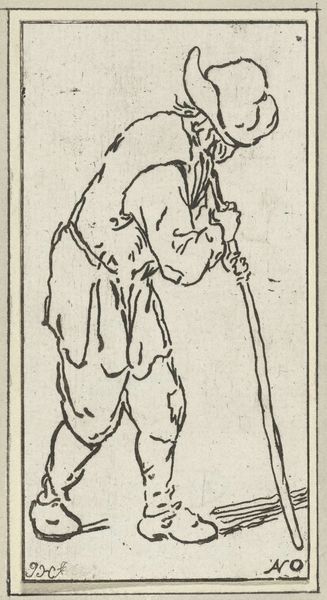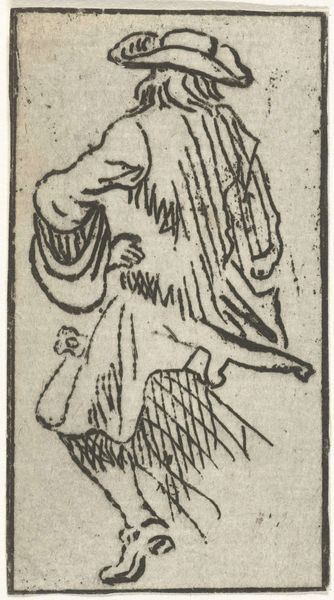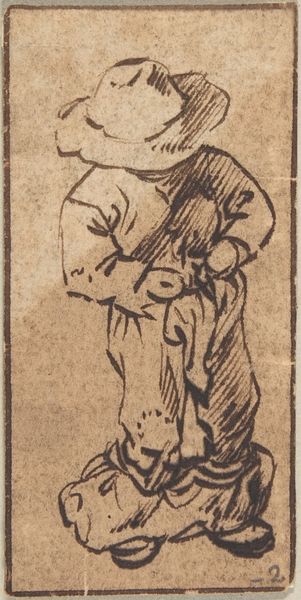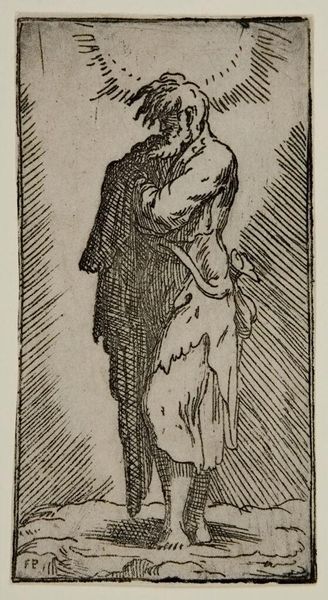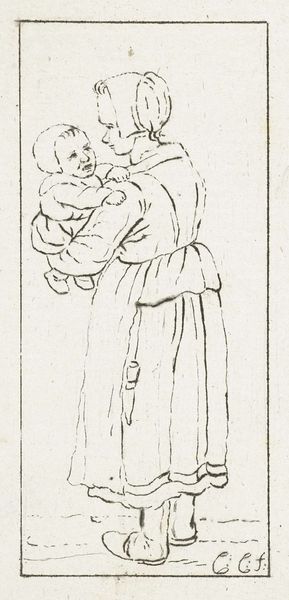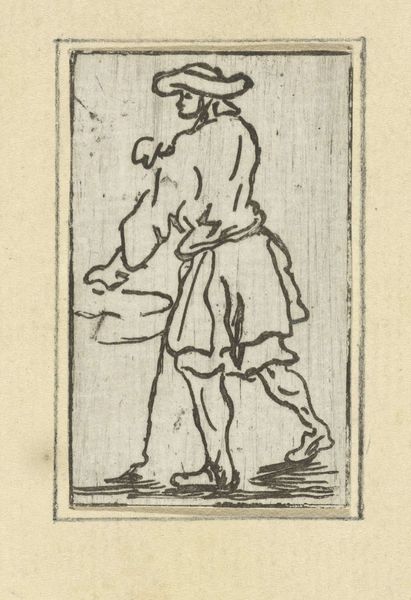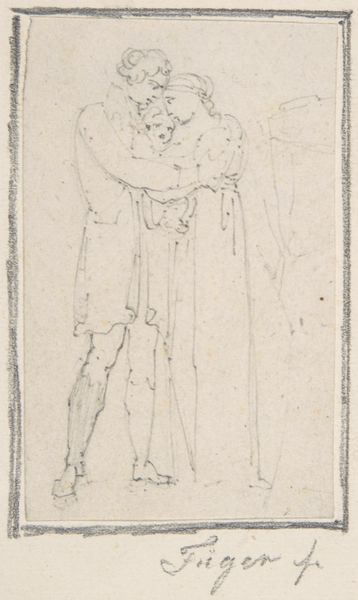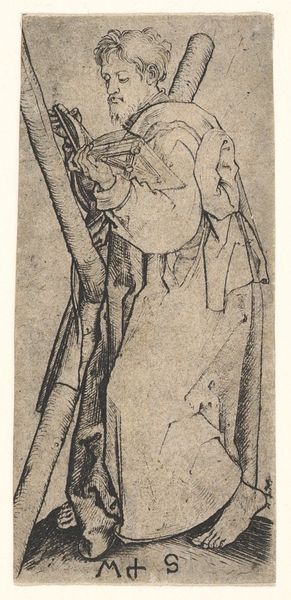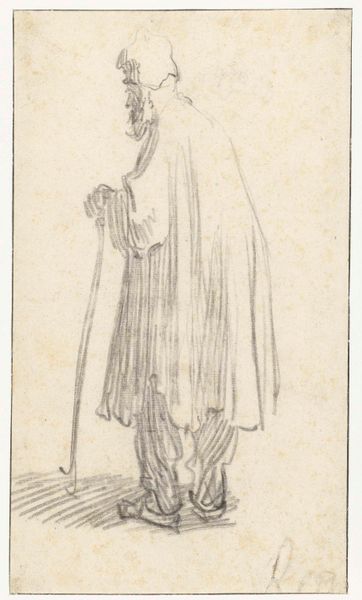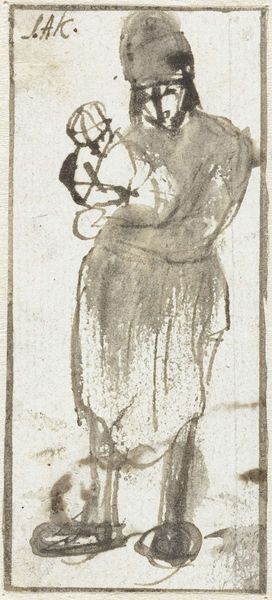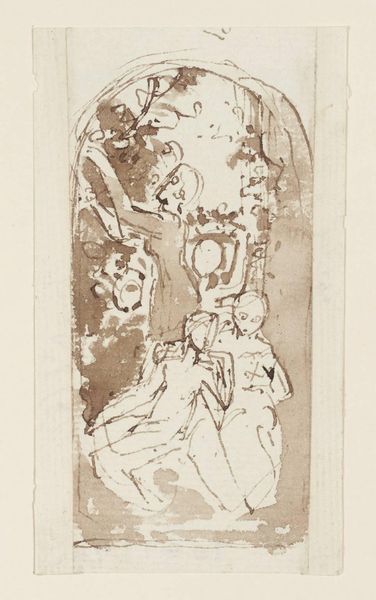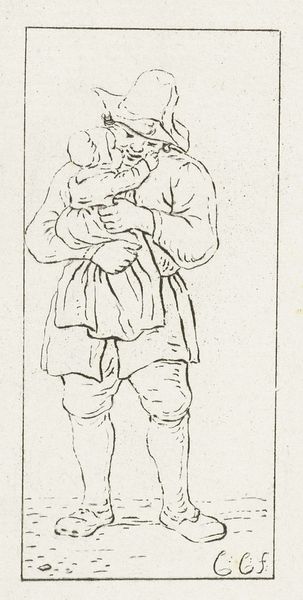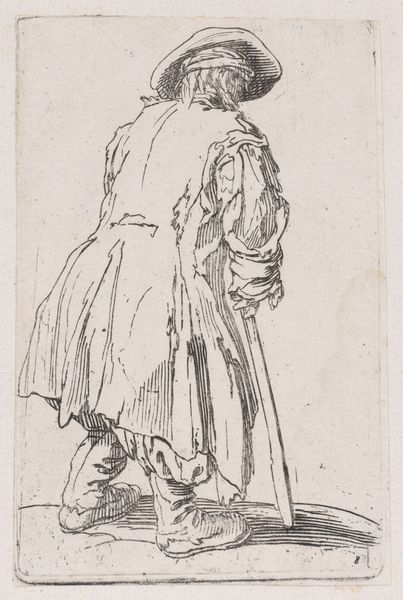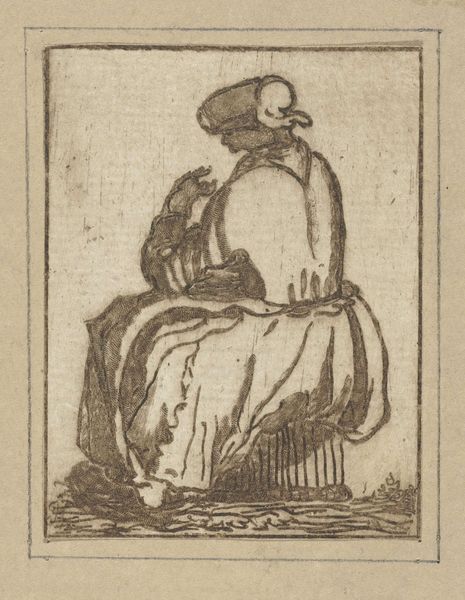
drawing, ink
#
portrait
#
drawing
#
baroque
#
dutch-golden-age
#
pen illustration
#
pen sketch
#
ink
#
genre-painting
Dimensions: height 113 mm, width 50 mm
Copyright: Rijks Museum: Open Domain
Curator: Immediately, I see an unassuming humility about the subject; his stance, the tilted hat... Editor: Yes, there’s a kind of deferential quality to this sketch. We’re looking at a work called "Man met stok zijn hoed afnemend," or "Man with stick taking off his hat," created between 1728 and 1789 by Jacob Hoolaart. It's an ink drawing, capturing a figure in what seems to be a moment of polite greeting. Curator: The man's posture is particularly revealing; the bowed head and the offering of his hat seem symbolic. The stick may function dually here, both to indicate an individual worn from labor and in offering itself as an object, not unlike the gesture of lifting the hat. The very presence of this figure suggests established social rituals during this time, a dance of acknowledgment... Editor: I find the clothing fascinating, hinting at societal class. He is not wealthy, as evinced in dress and what looks to be heavy, possibly cobbled, shoes; what is the history here, do we know the specific context this piece could represent? Is he greeting someone specific, or could this gesture represent a ubiquitous practice? Curator: Considering Hoolaart's background and the context of Dutch Golden Age genre painting, it’s likely the artist was keen to capture these fleeting moments of ordinary life and give us something familiar. Artists who gave the lower class a focus elevated their daily acts into artistic substance. Editor: You can almost feel the texture in the lines, which convey this very human mixture of deference and fatigue. The lines also betray, to my eye, what looks like a quick study rather than a sustained studio work. What’s especially poignant to me is the weight carried within simple human actions, like greeting another; the artist has masterfully brought such emotions to bear in a piece whose ink outlines dance, and yet carry with them considerable substance. Curator: Indeed. It's a snapshot of 18th-century social customs and how those played out across social stratifications, reflecting broader trends of how artistic practice shifted to include people of diverse statuses in Europe. Editor: I hadn't quite grasped the nuanced way in which societal stratification informs our reading of what I'd previously appraised only for an immediate sense of human poignancy, thank you.
Comments
No comments
Be the first to comment and join the conversation on the ultimate creative platform.
